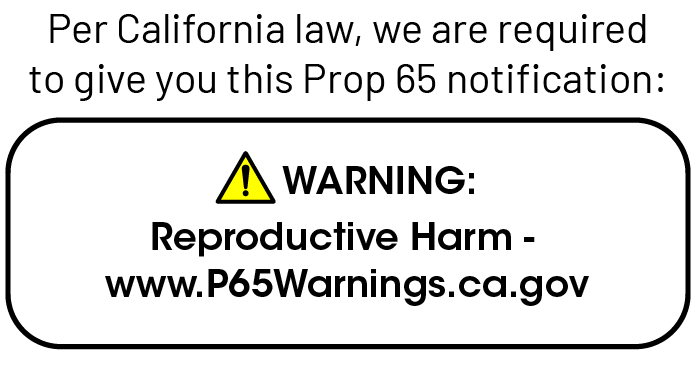The Do's and Don'ts of Acid Layering
Posted by Mack Leonard on Jul 28th 2022
We have a problem. Dead skin cells are clinging to our skin, reducing its brightness and giving it a muted texture. So what do we do? We reach for acids.
We’ve heard that acids can break down dead skin cells. But which one will do the trick? Salicylic acid, glycolic acid and lactic acid are among the possibilities. All of these are advertised as having “chemical exfoliating” qualities—they can break down the dead skin cells and expose the fresh, healthy skin beneath.
We think: how about trying all of them?
So we slather on a cleanser with salicylic acid and leave it there for twenty minutes. After that, we rub in generous volumes of a separate glycolic acid product, figuring that our dead skin cell issue is so severe, we need huge amounts of acid to mitigate it. Having survived that, we think, what’s the harm of using one more? So we grab a trendy lactic acid exfoliant and go to town with that, blasting every last bit of beleaguered skin tissue with yet another acid salvo.
The outcome: redness and irritation like overtime in a tanning bed.
Indiscriminate use of acids is not the breakthrough skin care routine of 2023. It’s more like a recipe for chemical burns. The only skin care takeaway you’ll gather from that is how well our High-Potency EGF Serum restores damaged skin.
Acids have their place in skin care, to be sure. Dead skin cells can cause issues and chemical exfoliation can help. But pounding your skin with acids galore is not the way to brighter, healthier skin. Knowing when and how to use acids, either alone or in combination, can make the difference between a pleasant glow and an agonizing burn.
Different Acids and What They Do for the Skin
With so many types and combinations of acids appearing in products, it can be confusing to understand their effects. Here at Skin Actives, where we always seek to avoid irritants, we offer several products containing acids for different reasons. Take these two for example:
Our Hyaluronic Acid Serum is a terrific moisturizer…
While Salicylic Acid Cleanser works wonders on acne.
Based on this presentation, it may seem natural that acids can be combined. After all, a little hyaluronic acid never hurts after a cleansing with salicylic acid. So we should be fine to blanket the skin with various acid-based exfoliants, right?
Not so fast. The story changes when we focus on exfoliation. “Acid layering,” as it is generally called in skin care media, involves using multiple acid products for their exfoliating effects. It is here that we need to exercise caution.
How Should We Use Acids to Exfoliate?
We advocate observing to key principles when exfoliating with acids:
- Having a light touch.
- Maintaining balance.
By having a light touch, we mean using only as many acids as your skin needs. For instance, a person with oily or acne-prone skin may be best served using Salicylic Acid Cleanser as their only form of exfoliation (even without the word “exfoliant” in its name, it will still break down dead skin cells to a beneficial effect).
In general, those with sensitive skin should aim to keep their exfoliation practices as mild as possible. While clearing dead skin cells can be advantageous, it’s not worth provoking a separate form of inflammation.
Now for the second principle: maintaining balance. This goes for another group of skin care users, those with less sensitive skin that can tolerate additional forms of exfoliation. If you are set on incorporating multiple chemical exfoliants in your routine (such as glycolic and lactic acids), it is best to do so with a single, balanced product.
A Balanced Exfoliant, You Say? Such as…?
Our Glycolic Alpha-Beta Exfoliant Solution was designed with exactly this purpose in mind.
Glycolic acid, salicylic acid and lactic acid are each effective chemical exfoliants in their own right. Proponents of acid layering may recommend finding products with each type and combining them in your routine. Sound like a lot of effort, not to mention risk?
We took care of it for you. Rather than mixing three different acid products by hand—and risking severe or unreliable outcomes—we made an exfoliant that blends them precisely. This way, you’re exfoliating effectively without risking inflammation. In other words, we provided an easy solution for maintaining balance.
But we didn’t just fine-tune the acid profile and leave it at that. In a signature Skin Actives touch, we blended the acids with an array of antioxidants and nourishing botanical oils to keep your skin functioning healthily post-exfoliation.
Avoiding Acid Mania
No one expects redness or irritation from their skin care routine. Running fast and loose with acid layering can put you at risk of these unwanted outcomes. That being said, the benefits of exfoliation—including clearer, brighter and healthier skin—are still achievable.
Remember our two key principles of exfoliating with acids. Have a light touch: not just with product choice, but with frequency of application and amount of product used. And when further exfoliation is warranted, be sure to maintain balance.
Glycolic Alpha-Beta Exfoliant strikes the ideal balance between gentleness and exfoliating properties. Take it from these five-star reviews on our website:
“My go to exfoliant - works great with my sensitive skin, effective but no irritations.”
“Non-irritating and resulting in very smooth skin. I highly recommend this serum.”
“This product did not cause irritation to my skin although it did cause my skin to feel very smooth and look very fresh and bright.”
We love to see positive experiences in our reviews, especially when it comes to a delicate balance like gentle but effective exfoliation. In our view, you should accept nothing less from your skin care routine. So if your current exfoliation causes any sort of irritation—or if you’re a newcomer looking for an effective and low-risk product—Glycolic Alpha-Beta Exfoliant belongs at the top of your shopping list.

